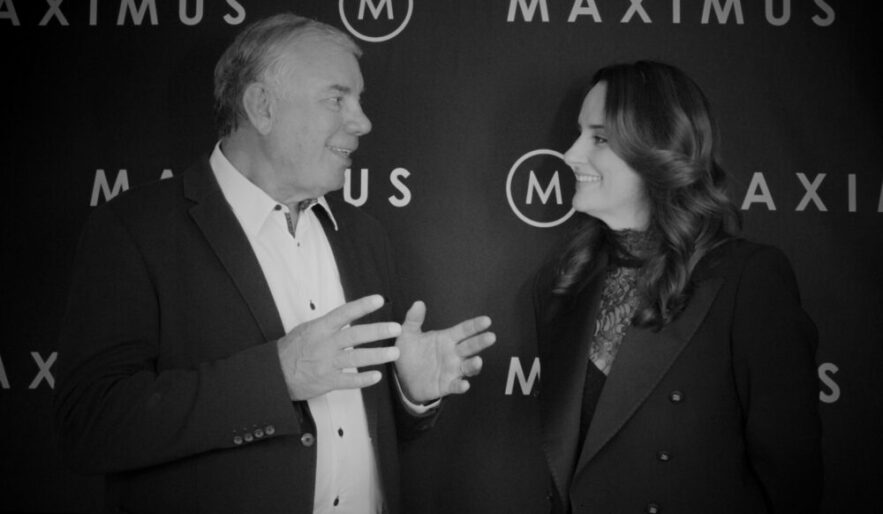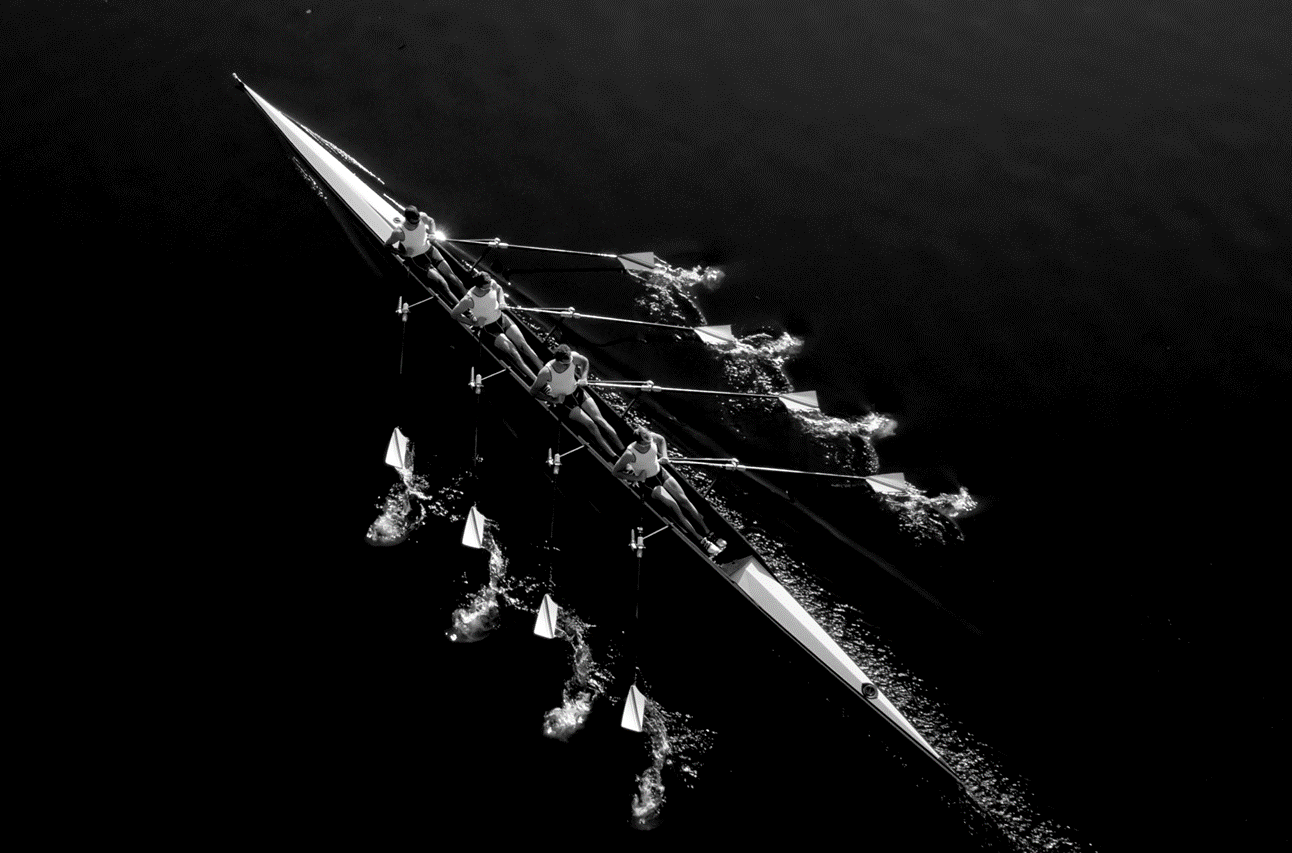Big problems deserve big solutions, and in an increasingly globalised environment there are plenty of big problems looking to be solved.
These challenges are arising for several reasons. There’s the fact that with each innovative solution, the frictionless nature of the new offerings causes expectations to rise. When we have a more abrasive experience as a consumer or as an employee, we automatically think there must be a better way.
That’s what Sydney-based civil engineer Amanda Sequiera thought when she was employed to sit in an office all day, watching footage from sewer pipe inspection cameras. Her role was to identify damage that needed to be repaired, but the sheer absurdity of her job made her realise there must be a better way.
Sequiera reimagined a solution called VAPAR that uses artificial intelligence (AI) and machine learning to analyse footage much faster and far more accurately than a human. In doing so, she also freed up engineers to do the work they’re passionate about.
The expectations of consumers and workers are rising, as is the capability of technology itself. Processing power, and the machine learning and AI wonders that it makes possible, has meant solutions that previously couldn’t have been considered are now a reality.
Leaders and organisations capable of reimagination boast a competitive advantage more potent than any other. They can make disruption a part of their strategy, develop powerful solutions to fundamental human and organisational problems and, in doing so, unlock entirely new commercial potential.
How does reimagination work? It’s thanks to three ideation techniques: ‘Revolution’, ‘Opposites’ and ‘Related worlds’. Here, Maximus explores them all…

THE POWER OF ‘WHAT IF?’
“The ideation technique known as ‘Revolution’ is about reimagining what’s possible by developing new systems that don’t look like the old systems,” says James Aris, Head of Innovation, Offerings and Marketing at Maximus.
Take What3Words, for instance. The founders – a mathematician, a musician and a quiz-show host – considered the revolutionary idea of how to reimagine the world’s addressing system after hearing tales of the frustrations experienced by professional musicians who’d been booked for gigs, only to end up lost.
The musicians would be given addresses for performance venues that would end up being the carpark entry gate to a sprawling music festival, the stage on which they’re playing still hundreds of metres away. Or they’d be told to arrive at a remote chateau in France, only to end up on the wrong side of a valley. Or they’d be directed in Rome to a hole-in-the-wall bar which, to the untrained eye, was identical to the numerous other hole-in-the-wall bars on the same block.
What3Words began with GPS coordinates, but there were too many digits involved, meaning addresses would be too easily forgotten or miscommunicated. They moved to alpha-numeric codes, but the solution created similar issues. Then they realised a solution was not going to be found in the current addressing and navigation realm. A completely novel approach was required.
“There was a dictionary on the table and they realised if they had a pool of 40,000 words, and each address contained just three of those words, they would have enough three-word combinations to provide one address for every three-metre by three-metre grid on Earth, including oceans,” explains Giles Rhys Jones, chief marketing officer of What3Words.
And so a patch of grass in Sydney’s Hyde Park now has a unique address – ///winner.eggs.charm. So does the middle patch of centre court at London’s Wimbledon Tennis Club – ///metals.figure.crisp. As does a remote point on the Nepal/China border, in the high Himalaya and on the slopes of Mt Everest – ///patriot.biggest.managements.
“The UK emergency services are now using us,” says Rhys Jones. “It means they can locate people more easily and quickly and therefore save more lives. We’re also being used by postal services in Mongolia.”
The chairman of Daimler was an early admirer of the work of What3Words, and the system is now embedded in Mercedes-Benz vehicles. Drivers can ask to be directed to a three-word address, rather than a street address.
“You get a certain group of people who hear the idea then suck their teeth and say, ‘That’s a bit weird, we’ve always used this system and it works’,” Rhys Jones says. “We agreed that we’re going to ignore those types of people and those types of industries. We instead focused on people who got it, and who don’t mind the fact that they might have the word ‘lettuce’ in their address. These are people who we call ‘ambitious innovators’.”
Most importantly, the idea solved the very human problem of how to clearly communicate a precise location, even if it was in the middle of a forest. Better still was the fact that it was available via a simple app on a smartphone.
“Some systems and processes only require iterative change. But sometimes there’s a perceived need for drastically different results and a frustration with the status quo,” says Aris. “In fact, if you’re feeling extremely frustrated about something and you’re told, ‘that’s just the way it works around here’, then you’re almost certainly onto a winner from a value-creation perspective.”
The ‘Revolution’ ideation technique first involves the development of a deep understanding of all of the rules around a particular problem, Aris says. For the What3Words team, these rules included the facts that addresses had to contain a street number, a street name, a region and a country name.
“We have had to develop a deep knowledge and expertise around many industries,” Rhys Jones says. “We spend a lot of time in the automotive world. We spend a lot of time in the emergency services world. We spend a lot of time in the logistics world. Before we can implement our new solution, we have to deeply understand the challenges within those industries, and how their systems work.”
Once the rules are confirmed, it’s time to ask, ‘What if?’ questions around each of them. People should be unafraid to exaggerate, oppose, reduce or reverse assumptions.
“What3Words didn’t start with the idea that they should reimagine the world’s addresses,” Aris says. “It began with the articulation of the problem. And the problem was very specific and simple. Musicians kept turning up at the wrong place. How do we stop that from happening?”
“Then they looked at the multiple applications of solving that problem and, in doing so, developed a deeply human insight into something that was not right in the world,” he notes. “When you reimagine a solution, it typically bleeds across so many other industries and areas that it unlocks much more value than originally intended.”
“When you reimagine a solution, it typically bleeds across so many other industries and areas that it unlocks much more value than originally intended.”
– James Aris, Head of Innovation, Offerings and Marketing at Maximus
FALLING IN LOVE WITH THE PROBLEM
Sometimes a problem is strategy-based, product-based or customer-based. No matter the type of issue, it’s vital to first develop a thorough understanding of the problem itself. If an organisation skips that step and immediately makes the leap to developing a solution, it’s likely to be a Band-Aid rather than a cure.
“When we’re working with leaders in ideation sessions it’s fascinating to really spend time in the problem rather than rushing to a solution. It helps us to see what we can do in terms of different ways of looking at the problem, and new, novel approaches,” says Laura Sturt Addicott, Associate Director at Maximus. “One way we do this, particularly when time is short, is to employ the ‘Opposites’ technique.”
An organisation that models this technique admirably is X, also known as The Moonshot Factory. It’s a Google company that brings together inventors and entrepreneurs to launch technologies aimed at improving the lives of billions of people.
X is working, for example, on a project looking into how balloons suspended in the atmosphere might help bring internet connection to the most remote places in the world. Another is investigating how kites might be able to generate power in unexpected places. A third is experimenting with light beams, and how they can be used to transmit highspeed data across long distances, like fibre but without the laying of wires. Each began with an appreciation of a fundamental problem.
“At X, their philosophy is based on falling in love with the problem and not the solution,” says Sturt-Addicott.
An ‘Opposites’ discussion doesn’t necessarily result in a solution, but rather it helps people to see the problem, and potential solutions, through a different lens. It frees them from the shackles that decades of industry experience have placed around them and puts them in a space where they’re more open to new ideas. And interestingly, Sturt-Addicott says, it’s typically the most ridiculous opposites that generate the best results.
Consider discos, Sturt-Addicott says, and the fact they require loud music. The opposite would be silence, which at first seems ridiculous. But actually, there are now silent discos.
Sturt-Addicott also recalls a story of a sailing team that changed the winching system from one driven by hands and arms to one driven by legs and feet, taking advantage of the fact that legs are stronger and more powerful.
“At first everyone said, ‘You can’t possibly do that! It must be breaking the rules!” she says. “But they did it and they won races and finally people realised there was something in the idea. It wasn’t so ridiculous after all.”

THE ANSWER IS OUTSIDE YOUR OWN INDUSTRY
When Qantas was looking at improving efficiencies across its network, it identified one problem as being the cost of maintenance, both in terms of revenue and time. The company drilled down through the problem and came to the root cause, which was that service and maintenance of aircraft between flights was taking too long. Qantas needed to get its vehicles in and out of the bays more quickly, but its ground crews were already working as fast as they could. Or were they?
Instead of looking within its industry, where most airlines performed similarly, Qantas looked for a ‘Related world’, an industry where the fast servicing of a vehicle was vital to a team or organisation’s success.
“Qantas spoke to Formula One teams to find out how they operate,” says Huw Thomas, Associate Director at Maximus. “The intention was to get the aircraft maintenance teams to operate like a Formula One pit crew.”
“They picked up different techniques, including mindset, processes and systems, and applied them to aircraft maintenance. It radically sped up their maintenance times and led to less mechanical issues and delays before take-off. From that a host of other benefits came, too,” Thomas says.
A current example of related worlds happening on a grand scale is Facebook’s attempt to re-shape the field of payment, with Libra. The social media giant has looked outside traditional finance to the world of cryptocurrency, but has invited major players from traditional finance to partner on the project. Whether it succeeds in its mission is yet to be seen, but the process of reimagination has been an interesting one.
How does ‘Related worlds’ work in an ideation environment? It begins with a simple question – what am I trying to achieve? This is written as succinctly as possible, before the group is asked to think of other businesses, industries, leaders, examples from nature, etc., that reflect a similar challenge.
“In our normal work lives, we seem to get locked into a state of only being able to think in terms of incremental improvement,” Thomas says. “But if you look outside the organisation or industry it helps you to abandon all assumptions and rules and see how it’s done in a completely different but related world. It removes the technical rules and details that get in the way.”
Sometimes the answer is in nature – the design of high-speed Japanese bullet trains was modelled on the beak of a Kingfisher. Velcro was developed after burrs stuck obstinately to the pants of its inventor, and to his dog’s coat, during bushwalks.
“It’s about simplifying the problem to a very basic level and then asking where else you have seen this problem in the world,” Thomas says. “It’s actually quite a creative and fun process.
It has to be a little bit outrageous. But those outrageous ideas, the more they’re discussed, actually become more practical.”
One essential ingredient for success in this, and other, ideation techniques is a diversity of people.
“This is also why businesses bring in consultants, because consultants ask plenty of dumb questions while they’re trying to understand how the business works,” Thomas says. “This process itself helps to influence a client to think in a different way. And, of course, consultants can provide different ideas from other industries and share what’s being done in other organisations.”

EXPLORING REIMAGINATION IN YOUR ORGANISATION
From an organisational perspective, reimagination can seem challenging – but it can become part of the daily process of the business. For instance, Maximus recommends leaders regularly run a simple process that identifies people who might not be so cognisant of the rules.
“One thing to do is embrace employees who are new to your organisation or, even better, new to the industry, because they’re not shackled,” Aris says.
“Many businesses are embracing this. You only need to look at the increasing appetites around hiring executives from different industries. An Academy of Management Journal study found that CEOs with ‘medium or moderate experience’ in a particular industry were higher performers than CEOs with high levels of industry-specific experience.”
At Maximus, we work with leaders to help them recognise opportunities and ways to encourage staff to delve curiously into adjacent industries, and to have the courage to consider change when thinking about these related worlds.
As in the case of an FMCG manager of whipped-cream-in-a-can products who solved a shelf-life problem by discovering a solution in the fire extinguisher industry, most problems an organisation is trying to solve have been solved very neatly elsewhere. Most importantly, Maximus helps to show businesses how to implement systems that encourage and capture even the wildest of ideas.
“You should never shut people’s doors of ideas, because while they might not be opening the right door, it might lead to another door,” Aris says. “And a brilliant idea coupled with a coalition of the willing can implement enormous change a lot quicker than you might imagine, even in more traditional businesses and economies.”
This article was originally published in the 4th edition of M Magazine, an exclusive print magazine aimed at inspiring and driving change through Australia’s executives and heads of HR.






